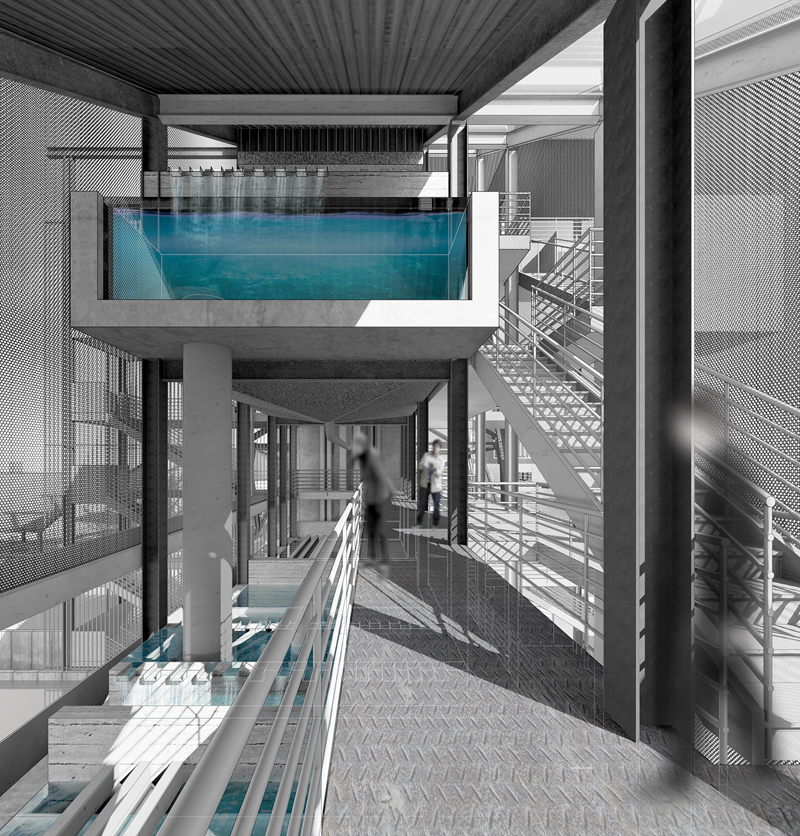Engaging the Post-Industrial Frontier
Joshua Nieves, Dalhousie University
WINNER OF A 2018 CANADIAN ARCHITECT STUDENT AWARD OF EXCELLENCE
Excess soils and waste mounded around the Berkeley Pit copper mine have obscured its view from the city, changed natural ravines into vast tailings ponds, and caused the pit to fill with toxic waters. This project centres on four locations in and around the vast super-fund area. Uses for the sites are based on their latent infrastructural potential.
 The original mine yard has been an impromptu music venue since the mine’s closure in 1976, and the city aspires to convert it to a permanent concert facility. The project invents a winch-based system that enables the headframe to be transformed into a sunken theatre, concert venue, outdoor stage, or elevated black-box theatre.
The original mine yard has been an impromptu music venue since the mine’s closure in 1976, and the city aspires to convert it to a permanent concert facility. The project invents a winch-based system that enables the headframe to be transformed into a sunken theatre, concert venue, outdoor stage, or elevated black-box theatre.
Used as a water level monitoring point, the Anselmo mine is linked through underground tunnels to the Berkeley Pit. Its headframe is connected to house a water treatment facility intertwined with public gallery and viewing spaces. At grade, phytoremediation wetlands transform the vacant watershed into a greenway.
 Currently, the Berkeley Pit Viewing Stand is a tourist attraction, which tunnels through the perimeter mound of overburden and onto a small viewing platform. The project uses the existing tunnel as the primary access point for reclamation efforts within the mine, re-establishing this landscape as a publicly accessible parkland.
Currently, the Berkeley Pit Viewing Stand is a tourist attraction, which tunnels through the perimeter mound of overburden and onto a small viewing platform. The project uses the existing tunnel as the primary access point for reclamation efforts within the mine, re-establishing this landscape as a publicly accessible parkland.
Sitting atop the northern slopes of the Berkeley Pit, the Emily Mine headframe has become an iconic structure for photographers. It is transformed into a destination and gathering place, with a cathedral-like roof over a monumental bonfire pit.
Through the adaptation of Butte’s dormant infrastructure, we can work towards the restoration of local environmental systems, and also imagine new possibilities for how to inhabit the greater global post-industrial frontier.
Faculty advisor:: Catherine Venart, Dalhousie University
Jury Comments
Monica Adair :: This is a rigorous exploration of interventions that rethink a series of once-derelict landscapes. It is convincing in its comprehensiveness and completeness.
Ted Watson :: This project is beautifully represented with an extremely strong graphic presentation of the subject. It looks at reclaiming industrial spaces in a socially and environmentally sustainable way. Each of the four sites has a different feel and realization that draws you in.
David Penner :: It’s interesting to see the romanticizing of industrial landscapes in the schools. There’s a good balance of resolution in this project, which spans from the big-picture issues relating to programming down to the details. I think that’s really admirable.
View within Canadian Architect magazine’s December 2018 Awards Issue:
